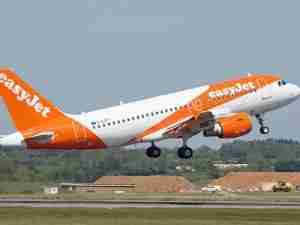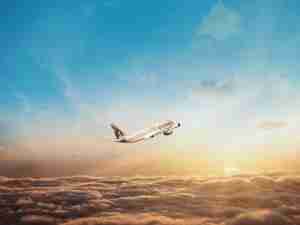Southwest Sends Oldest 737s to Graveyard as Max Joins Fleet
By: | Sep 29 2017 at 01:35 PM | Air Cargo
Southwest Airlines Co. is set to pull off an aviation high-wire act this weekend as it sends 30 of its oldest planes to a desert graveyard just 24 hours before launching the newest version of its staple 737 jetliner.
The changeover will usher in the latest fresh start for Boeing Co.’s bread-and-butter passenger plane, extending Southwest’s almost 50-year dedication to the 737 model. Saying goodbye to the old jets will reduce maintenance and fuel costs and improve on-time performance, while the new, bigger 737 Max offers more advanced technology and design.
For the transition to be a success, the airline must execute a carefully choreographed series of flights to move the older planes out of the fleet and bring in nine Max aircraft without creating delays or disruptions. Planning for the shift—its biggest such move ever—began 16 months ago and requires the coordination of flight crews, dispatchers, network planners, crew schedulers and technical operations teams.
“It’s no easy task,” said Jon Stephens, director of fleet transactions at the Dallas-based carrier. “It’s taken a lot of folks across the company to pull this off.”
The last of Southwest’s 737-300s, dubbed Classics, are making their final flights in the airline’s domestic system Friday. By the end of Saturday, they’ll all be parked at an aircraft graveyard in Victorville, California, a desert town northwest of Los Angeles.
Debut Flight
On Sunday, nine Max jetliners will start service from six different airports, with the first flying the “Texas Triangle” of Dallas-Houston-San Antonio that made up Southwest’s original routes in 1971. Southwest will add five more Max planes to its fleet before year end, and deploy used 737-700s it acquired to help fill any remaining gaps in its schedule.
If all goes well, passengers won’t even notice a difference, Stephens said. The transition was timed to happen after Labor Day, when travel demand normally dips. Since Southwest schedules multiple flights a day on many routes, there will be plenty of capacity to accommodate fliers, Stephens said.
The only hitch so far: An employee celebration to welcome delivery of its first Max jetliner at Southwest’s Dallas headquarters in August had to be canceled because of Hurricane Harvey.
Embracing Tradition
As the world’s biggest buyer of Boeing’s best-selling 737 aircraft and the first North American carrier to fly the Max upgrade, Southwest is continuing a long tradition. The 737-300, too, was the newest back in 1984 when Southwest debuted the plane in its fleet.
Thirty-three years later, those jets are giving way to the Max, a faster, quieter, larger, more fuel-efficient aircraft that can fly farther. The Max seats 175, which is 32 more than the Classic. The new planes have bigger overhead bins, WiFi, a new seat design and adjustable LED lighting.
The company has retired aircraft en masse before, but the scale of this weekend’s effort is testing its logistical skills. It’s relying, in part, on experience from 2014 when 27 Boeing 717s that Southwest acquired with its purchase of AirTran Airlines were parked in one night.
“I don’t think the world knew a thing,” Chief Executive Officer Gary Kelly said of that changeover.
Less Is More
With the Classic’s exit, Southwest’s fleet will dip to 688 at the end of the month from 735 on June 30, then recover to 707 by year-end as the airline layers in the Max aircraft among other new planes. Capacity, a measure of seats and miles flown, will rise by as much as 2 percent in the fourth quarter from a year ago.
The Max is expected to require less maintenance and use about 20 percent less fuel than the old -300s, bringing an estimated improvement to operating earnings of at least $200 million. The airline will take a $60 million charge on the -300 retirements. Flight operations also will benefit. The Classics, with an average age of 22 years, have a 69 percent on-time rate versus 81 percent for the newer 737-800 model.
The Max is easily distinguished from other 737s by the sleek, v-shaped winglets emblazoned in Southwest’s colors that smooth air flow, as well as scalloped engine covers known as nacelles that help curb noise.
Saying goodbye to the Classic prompts mixed emotions for some at Southwest, where the jet made up 63 percent of the carrier’s fleet at its peak in 1999. But most pilots and flight attendants will be glad to see the last of the older planes, said Jon Weaks, president of the Southwest Airlines Pilots’ Association, and Aubrey Stone, who leads Transport Workers Union local 556.
Past Time
The older planes required a different way of flying—procedurally and technologically, Weaks said, making the Classic “well past its time.”
The -300s gained notoriety for fuselage cracking on jets built between 1993 and 1999 that led regulators to require more frequent inspections. A 5-foot-long gash opened in a fuselage mid-flight in April 2011, injuring two people. In July 2009, an 18-inch by 12-inch hole developed near the tail of a plane in flight, causing a loss of pressure that forced an emergency landing.
Southwest has been ferrying -300s out to Victorville gradually, after starting 2017 with 87 of the planes. The airline plans to sell them whole or in pieces, return some to lessors and scrap the rest, Chief Operating Officer Mike Van De Ven said in an interview. The goal is to be rid of the planes by the end of the year.
“We’re not going to have a used-airplane parking lot,” Van De Ven said.
Southwest will mark the final flights of the outgoing planes with small airport celebrations—no large ceremony is planned. But the Classics already are memorialized in an exhibit at an aviation museum adjacent to Dallas Love Field, where the first -300 flown by Southwest, dubbed Spirit of Kitty Hawk, is on display.
When the old jets arrived in 1984, “they were the best airplane out there,” Van De Ven said. “There’s a generation of people who worked for Southwest Airlines that that airplane provided for.”










